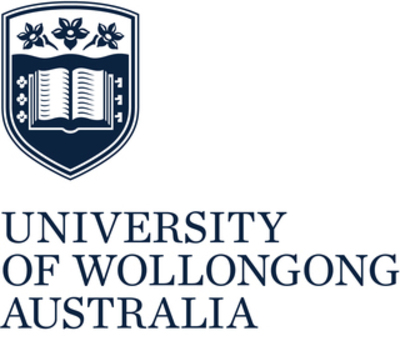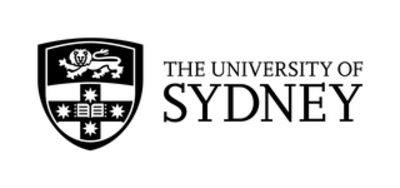- Home
Edition
Africa Australia Brasil Canada Canada (français) España Europe France Global Indonesia New Zealand United Kingdom United States Edition:
Global
Edition:
Global
- Africa
- Australia
- Brasil
- Canada
- Canada (français)
- España
- Europe
- France
- Indonesia
- New Zealand
- United Kingdom
- United States
 Academic rigour, journalistic flair
How China cleaned up its air pollution – and what that meant for the climate
Published: November 20, 2025 6.32pm GMT
Gemma Ware, The Conversation, Laura Wilcox
Academic rigour, journalistic flair
How China cleaned up its air pollution – and what that meant for the climate
Published: November 20, 2025 6.32pm GMT
Gemma Ware, The Conversation, Laura Wilcox
Author
-
 Gemma Ware
Gemma Ware
Host, The Conversation Weekly Podcast, The Conversation
Interviewed
-
 Laura Wilcox
Laura Wilcox
Professor, National Centre for Atmospheric Science, University of Reading
Disclosure statement
Laura Wilcox receives funding from the Natural Environment Research Council (NERC), the Research Council of Norway, the Clean Air Fund, and Horizon Europe.
Partners
View all partners
DOI
https://doi.org/10.64628/AB.gsrynkttt
 Blue skies above Beijing in 2025.
ZCOOL HelloRF/Shutterstock
https://theconversation.com/how-china-cleaned-up-its-air-pollution-and-what-that-meant-for-the-climate-270170
https://theconversation.com/how-china-cleaned-up-its-air-pollution-and-what-that-meant-for-the-climate-270170
Link copied
Share article
Blue skies above Beijing in 2025.
ZCOOL HelloRF/Shutterstock
https://theconversation.com/how-china-cleaned-up-its-air-pollution-and-what-that-meant-for-the-climate-270170
https://theconversation.com/how-china-cleaned-up-its-air-pollution-and-what-that-meant-for-the-climate-270170
Link copied
Share article
Share article
Copy link Email Bluesky Facebook WhatsApp Messenger LinkedIn X (Twitter)Print article
Delhi: 442. Lahore: 334. Beijing: 16. These are the levels of PM 2.5, one of the principle measures for air pollution, on November 19.
As Pakistanis and Indians struggle with hazardous air quality, in Beijing – a city once notorious for its smog – the air quality is currently rated as good.
Ahead of the 2008 Beijing Olympics, the Chinese government was so concerned about pollution that it introduced temporary restrictions on cars, shut down factories and stopped work on some construction sites. The measures worked and one study later found that levels of air pollution were down 30% during the period when the temporary Olympic restrictions were in place.
It would take a few more years before the Chinese government implemented a clean air action plan in 2013. Since then, China has achieved a dramatic improvement in its air quality.
In this episode of The Conversation Weekly podcast, we speak to Laura Wilcox, a professor at the National Centre for Atmospheric Science at the University of Reading in the UK, to understand how China managed to clean up its air pollution. But Wilcox’s recent research uncovered some unintended consequences from this cleaner air for the global climate: the pollution was actually helping to cool the atmosphere and by taking it away, it may have accelerated global warming. Wilcox explains:
What we’re seeing is a removing of cooling that’s revealing warming that’s already there. So the air pollution isn’t the cause of the warming. It’s just letting us see stuff that we’ve already done.
Listen to the interview on The Conversation Weekly podcast. You can also read an article by Laura Wilcox and her colleague Bjørn H. Samset about their recent research on The Conversation.
This episode of The Conversation Weekly was written and produced by Mend Mariwany, Gemma Ware and Katie Flood. Mixing by Michelle Macklem and theme music by Neeta Sarl.
Newsclips in this episode from Voice of America, CBC, AP Archive, ABC (News) Australia, WFLA NBC Channel 8 and PBS.
Listen to The Conversation Weekly via any of the apps listed above, download it directly via our RSS feed or find out how else to listen here. A transcript of this episode is available via the Apple Podcasts or Spotify apps.
- Climate change
- China
- Geoengineering
- Air pollution
- Audio
- Podcasts
- 2008 Beijing Olympics
- The Conversation Weekly
Events
Jobs
-
 Associate Lecturer, Social Work
Associate Lecturer, Social Work
-
 Lecturer, Communication Design
Lecturer, Communication Design
-
 Leading Research Centre Coordinator
Leading Research Centre Coordinator
-
 Chairperson, Animal Ethics
Chairperson, Animal Ethics
-
 Senior Manager, Student Information and Regulatory Reporting
Senior Manager, Student Information and Regulatory Reporting
- Editorial Policies
- Community standards
- Republishing guidelines
- Analytics
- Our feeds
- Get newsletter
- Who we are
- Our charter
- Our team
- Partners and funders
- Resource for media
- Contact us
-
-
-
-
Copyright © 2010–2025, The Conversation

 Associate Lecturer, Social Work
Associate Lecturer, Social Work
 Lecturer, Communication Design
Lecturer, Communication Design
 Leading Research Centre Coordinator
Leading Research Centre Coordinator
 Chairperson, Animal Ethics
Chairperson, Animal Ethics
 Senior Manager, Student Information and Regulatory Reporting
Senior Manager, Student Information and Regulatory Reporting



